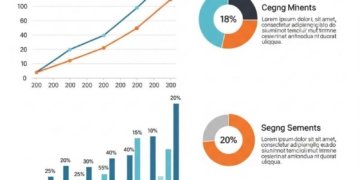The global medical image exchange systems market was valued at US$ 3.75 billion in 2022 and is projected to grow at a CAGR of 7.8%, reaching US$ 7.97 billion by 2032. These systems enable seamless sharing of medical images across healthcare networks, with increasing adoption driven by the shift toward cloud-based solutions and automation in diagnostic services. The implementation of 5G technology is expected to further enhance digital infrastructure, improving data transfer speeds and accessibility. With medical imaging providers rapidly migrating to cloud platforms, demand for secure, high-quality image exchange workflows is set to rise significantly over the next decade.
Get a Sample Report: https://www.persistencemarketresearch.com/samples/11464
Market Overview: Size, Share, and Growth Trajectory
The medical image exchange market is experiencing significant growth, driven by the widespread adoption of cloud-based healthcare solutions, artificial intelligence (AI), and telemedicine services. The market was valued at $3.8 billion in 2022 and is expected to more than double by 2032, reflecting a growing demand for secure and efficient medical image sharing.
Hospitals, diagnostic imaging centers, and research institutions are increasingly adopting interoperable platforms to exchange patient imaging data seamlessly. This shift towards digitalization is reducing dependency on physical storage methods such as CDs and DVDs, leading to improved patient outcomes and operational efficiency.
Key Drivers Fueling Market Growth
Several factors are propelling the medical image exchange market forward:
1. Rising Adoption of Cloud-Based Medical Imaging Solutions
The shift toward cloud-based PACS (Picture Archiving and Communication Systems) and vendor-neutral archives (VNAs) has enabled healthcare providers to access medical images from anywhere, eliminating geographical barriers. Cloud storage solutions offer cost-effectiveness, scalability, and enhanced security, making them a preferred choice among hospitals and imaging centers.
2. Growing Demand for Telemedicine and Remote Diagnostics
Telemedicine has seen an unprecedented surge, especially in the wake of the COVID-19 pandemic. The ability to remotely share and access medical images has become essential for radiologists and specialists working across different locations. With healthcare systems embracing teleradiology, the demand for seamless image exchange platforms continues to rise.
3. Integration of Artificial Intelligence in Medical Imaging
AI-powered imaging solutions are revolutionizing diagnostics by enabling faster and more accurate detection of diseases such as cancer, neurological disorders, and cardiovascular conditions. AI-driven image analysis tools enhance image-sharing platforms by providing automated annotations, anomaly detection, and predictive analytics, thereby improving clinical decision-making.
4. Increasing Regulations for Interoperability and Data Security
Regulatory authorities worldwide are pushing for interoperability in healthcare IT systems to ensure seamless data exchange between different providers. Compliance with standards such as DICOM (Digital Imaging and Communications in Medicine), FHIR (Fast Healthcare Interoperability Resources), and HIPAA (Health Insurance Portability and Accountability Act) is crucial for secure and efficient image exchange.
5. Technological Advancements in Imaging Modalities
Innovations in imaging technologies, including MRI, CT scans, ultrasound, and digital pathology, are generating vast amounts of medical data that require efficient storage, retrieval, and sharing mechanisms. The demand for high-resolution imaging and 3D reconstruction techniques further underscores the need for advanced image exchange solutions.
Challenges Hindering Market Growth
Despite its promising growth, the medical image exchange market faces several challenges:
1. Data Privacy and Cybersecurity Risks
The rising number of cyberattacks in the healthcare sector has raised concerns about data security and patient privacy. Healthcare organizations must implement robust encryption protocols, multi-factor authentication, and blockchain technology to mitigate security threats.
2. High Implementation Costs and IT Infrastructure Requirements
Deploying cloud-based imaging solutions requires substantial investments in IT infrastructure, staff training, and integration with existing hospital information systems (HIS). Smaller healthcare facilities may face financial constraints in adopting these advanced technologies.
3. Interoperability Issues Between Different Systems
Despite regulatory efforts, interoperability challenges persist, with different hospitals and imaging centers using non-standardized systems that may not communicate seamlessly. Addressing these issues requires a unified approach to healthcare data exchange.
Regional Insights: North America Leading the Market
1. North America: A Hub for Technological Advancements
North America dominates the medical image exchange market, accounting for the largest revenue share. The presence of well-established healthcare IT infrastructure, favorable government initiatives, and leading technology firms such as IBM Watson Health, GE Healthcare, and Philips drives regional growth.
2. Europe: Emphasis on Data Security and Compliance
Europe follows closely, with stringent data privacy regulations under GDPR (General Data Protection Regulation) influencing the adoption of secure image exchange platforms. Countries like Germany, the UK, and France are investing in AI-powered diagnostics and cloud-based PACS solutions.
3. Asia-Pacific: Rapid Digital Transformation in Healthcare
The Asia-Pacific region is witnessing exponential growth in medical imaging due to increasing healthcare expenditures, rising adoption of AI, and expanding telemedicine services. Countries like China, India, and Japan are investing in smart hospital infrastructure to streamline image-sharing processes.
Competitive Landscape: Key Players Driving Innovation
The medical image exchange market is highly competitive, with key players focusing on product innovation, strategic partnerships, and acquisitions to strengthen their market position. Some of the prominent companies in the industry include:
• IBM Watson Health – AI-powered imaging solutions and cloud-based data sharing
• GE Healthcare – Advanced PACS and diagnostic imaging platforms
• Philips Healthcare – AI-driven medical imaging and remote diagnostics
• Siemens Healthineers – Innovative radiology informatics solutions
• Agfa-Gevaert Group – Vendor-neutral archives and enterprise imaging solutions
Future Outlook: What Lies Ahead for the Medical Image Exchange Market?
The future of the medical image exchange market is set to be shaped by AI-driven automation, cloud computing, and blockchain-based security frameworks. As the industry moves toward fully interoperable and patient-centric imaging solutions, healthcare providers will continue to invest in next-generation diagnostic tools that enhance collaboration and efficiency.
Moreover, the growing adoption of edge computing and 5G networks will further accelerate real-time medical image sharing, reducing delays in diagnosis and treatment planning.
Conclusion: Transforming Healthcare Through Seamless Image Exchange
The medical image exchange market is at the forefront of digital transformation in healthcare, enabling faster diagnoses, improved patient care, and enhanced operational efficiency. With a projected market value of $7.97 billion by 2032, the industry is set to witness substantial growth, driven by cloud adoption, AI integration, and regulatory advancements.
As technology continues to evolve, stakeholders must address cybersecurity risks, interoperability challenges, and cost constraints to unlock the full potential of medical image exchange solutions. By fostering collaborations between healthcare providers, IT firms, and regulatory bodies, the industry can ensure a seamless, secure, and efficient future for medical imaging.
Read More Trending “PMR Exclusive Article”:
https://www.linkedin.com/pulse/specialties-lube-oil-refinery-industry-y4rwe
https://www.linkedin.com/pulse/indias-cem-market-set-grow-176-cagr-reaching-us-4lide
https://www.linkedin.com/pulse/automotive-turbocharger-industry-booming-news-zyvff
https://www.linkedin.com/pulse/automotive-steering-system-industry-trends-bqzxe
https://www.linkedin.com/pulse/33-dimethylacrylic-acid-methyl-ester-market-pnfff
Contact Us:
Persistence Market Research
G04 Golden Mile House, Clayponds Lane
Brentford, London, TW8 0GU UK
USA Phone: +1 646-878-6329
UK Phone: +44 203-837-5656
Email: sales@persistencemarketresearch.com
Web: https://www.persistencemarketresearch.com
About Persistence Market Research:
At Persistence Market Research, we specialize in creating research studies that serve as strategic tools for driving business growth. Established as a proprietary firm in 2012, we have evolved into a registered company in England and Wales in 2023 under the name Persistence Research & Consultancy Services Ltd. With a solid foundation, we have completed over 3600 custom and syndicate market research projects, and delivered more than 2700 projects for other leading market research companies’ clients.
Our approach combines traditional market research methods with modern tools to offer comprehensive research solutions. With a decade of experience, we pride ourselves on deriving actionable insights from data to help businesses stay ahead of the competition. Our client base spans multinational corporations, leading consulting firms, investment funds, and government departments. A significant portion of our sales comes from repeat clients, a testament to the value and trust we’ve built over the years.
This release was published on openPR.














